Welcome to a comprehensive exploration of the tactical intricacies defining Francesco Farioli’s impact on OGC Nice. In this analysis, we delve into the strategic brilliance that has marked Farioli’s influence on the team, dissecting formations, player movements, and the unique approach that sets OGC Nice apart under his guidance. The former assistant of Roberto De Zerbi has created a playing style highly influenced by his old mentor while incorporating his own unique ideas. From defensive structures to attacking maneuvers, join us in unraveling the tactical symphony orchestrated by Francesco Farioli at OGC Nice.
Build-up
Low Build-up
In the low build-up, Farioli sets his team up in a 3-3-2-3 formation with the goalkeeper playing between the center-backs.
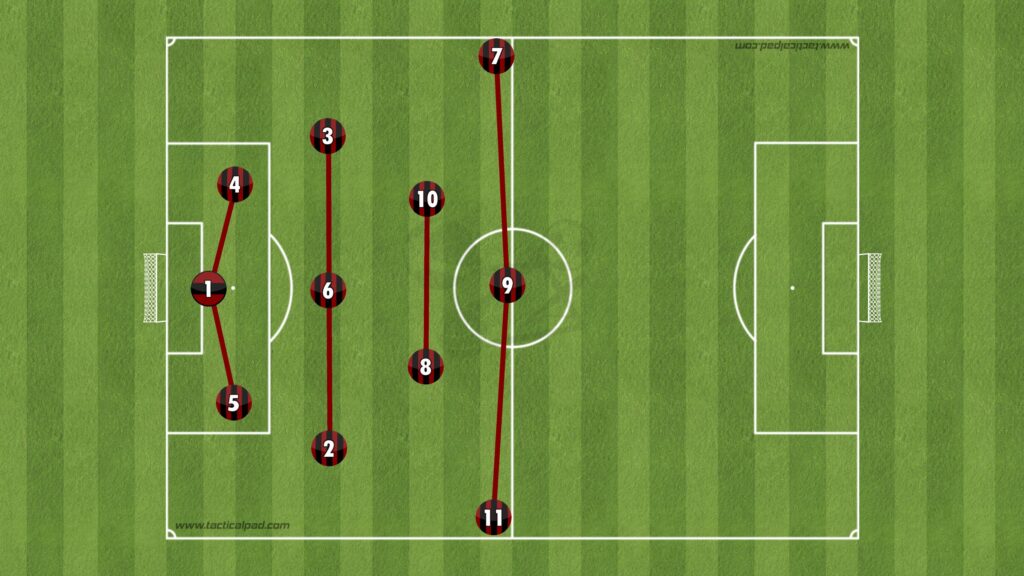
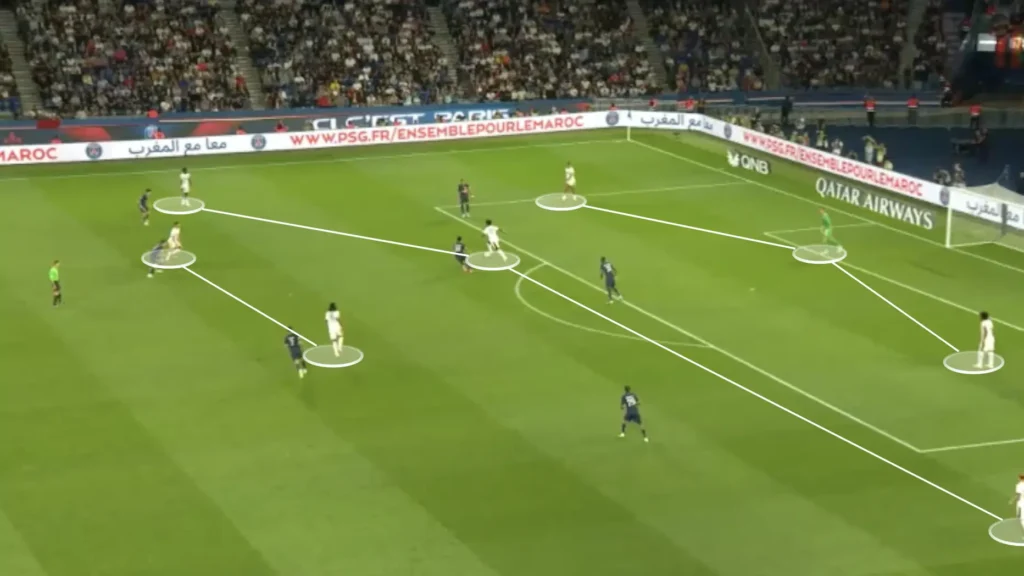
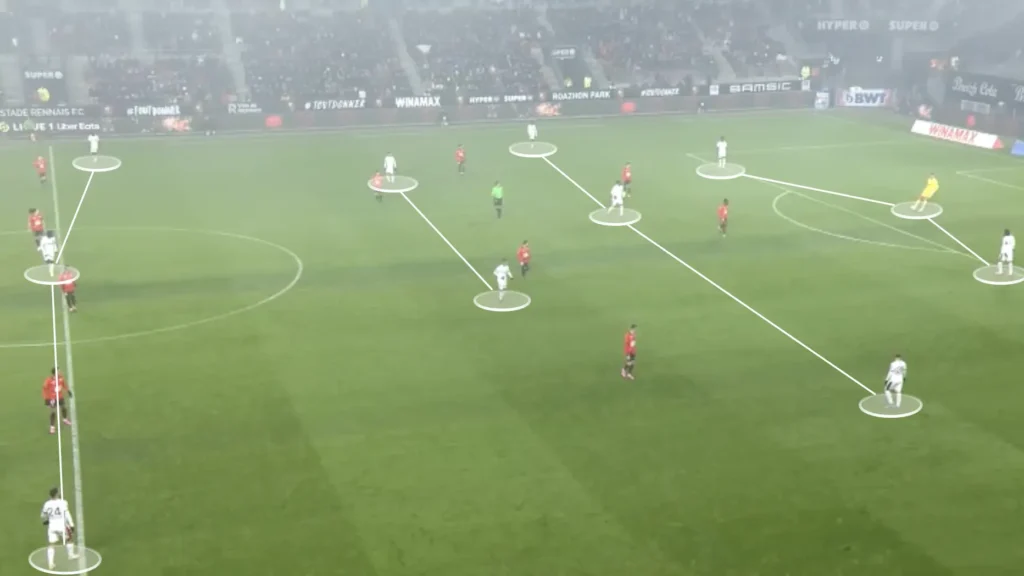
They often drop with the number eights and like using the goalkeeper, which creates numerical superiorities, allowing them to beat the press.
Inverted Fullbacks
The Nice fullbacks also invert during the build-up, creating more options in the center and less space between the players. Farioli likes this because he prioritizes playing through the middle. He needs one player high and wide to pull apart the backline while the rest create numerical advantages in the midfield areas. This builds good conditions in defensive transitions, allowing more players to press when they lose the ball. Another purpose for keeping most of the players central is that it lessens the space between them. This shortens the length of the passes, which naturally shortens the time between passes. This means the opposition players will have less time to push up and press, giving the Nice players more time and control.
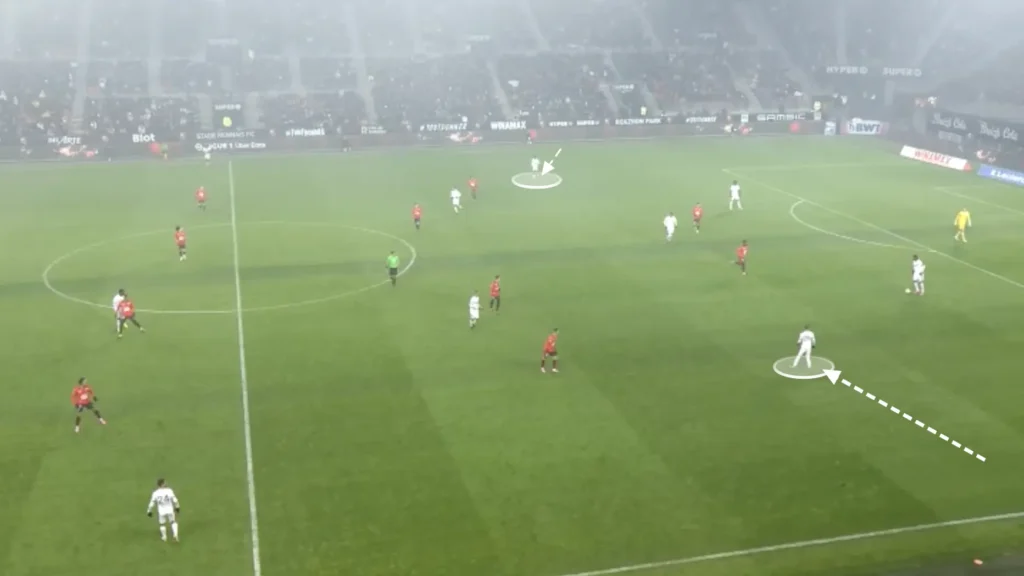
High Build-up
In the high build-up, Farioli’s Nice sets up in a 1-2-3-2-3 formation, the same as in the low build-up without the goalkeeper between the center-backs:
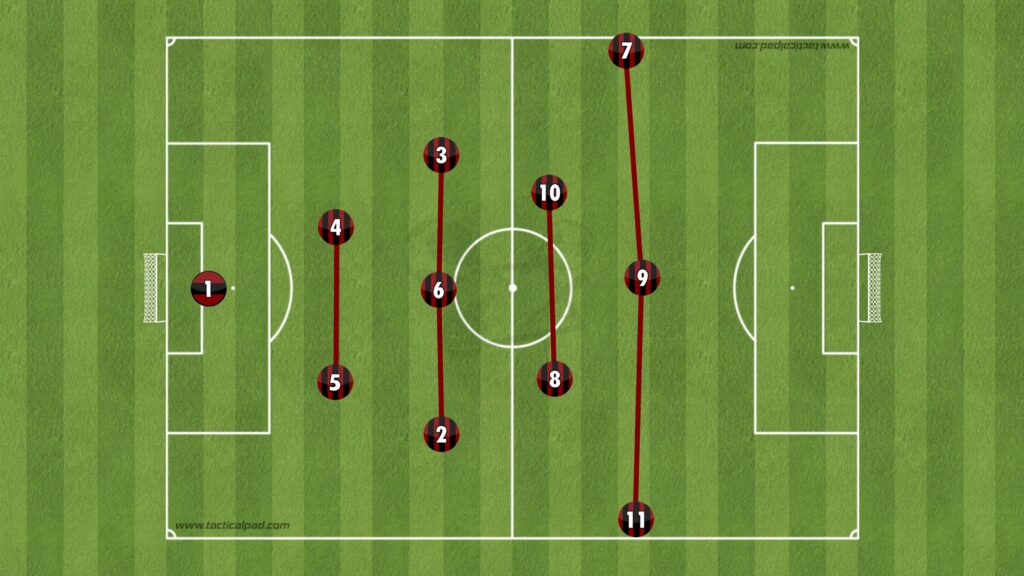
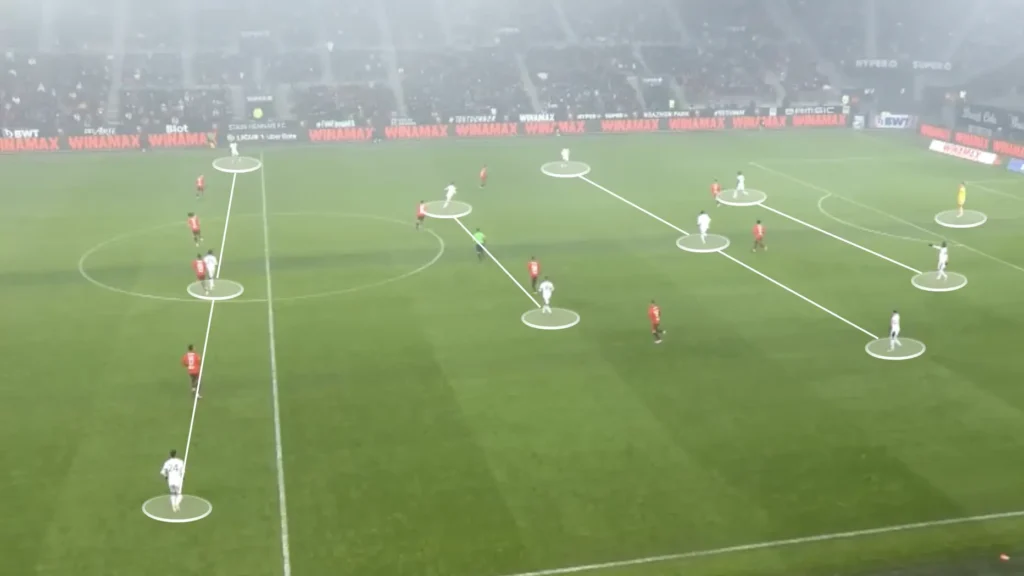
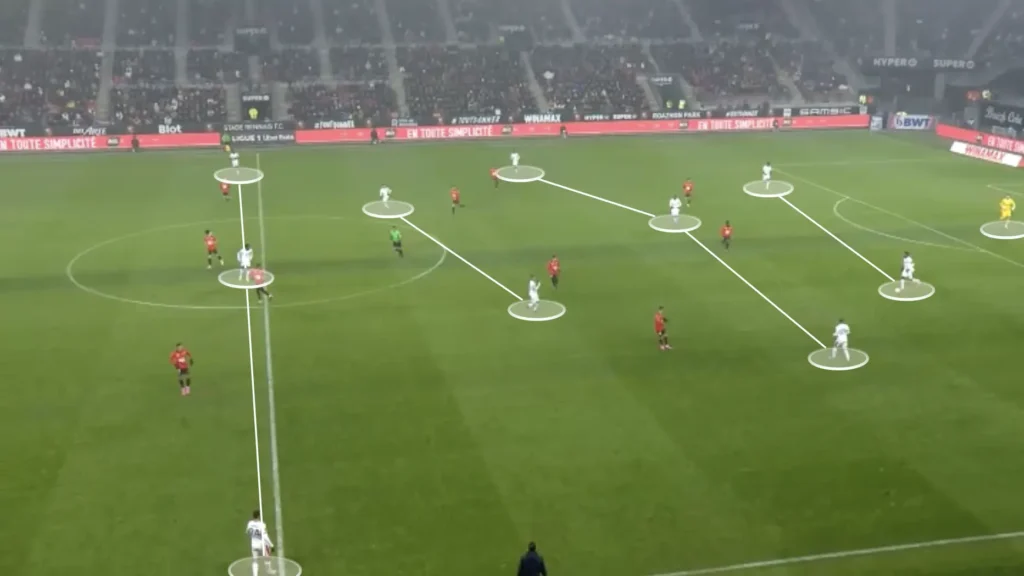
Attacking the Half-Space
Nice is an excellent team in the final third. They always create many chances, mainly by attacking the space between the opposition center-back and fullback.
They do this both from the wide areas with underlaps from midfielders:
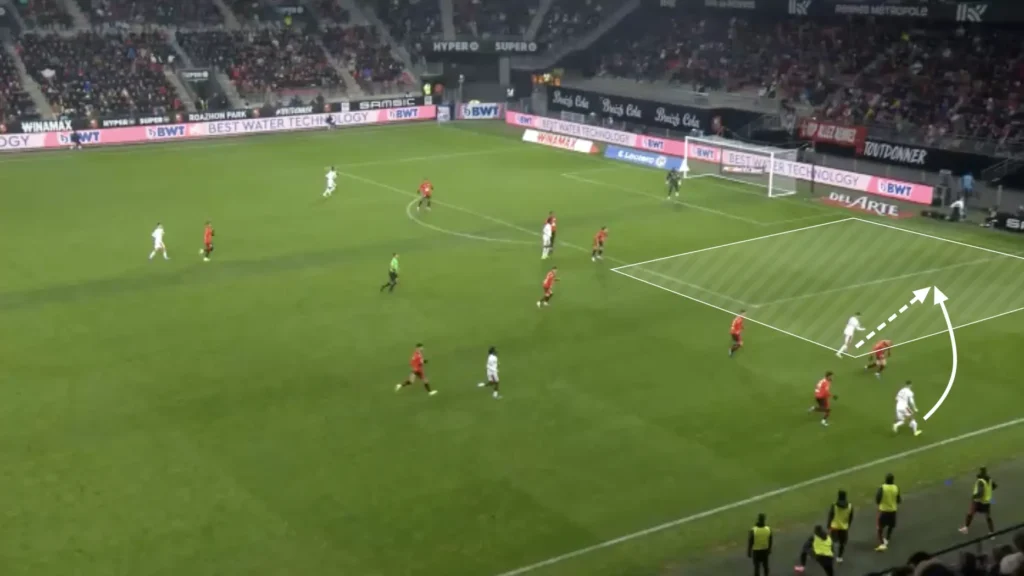
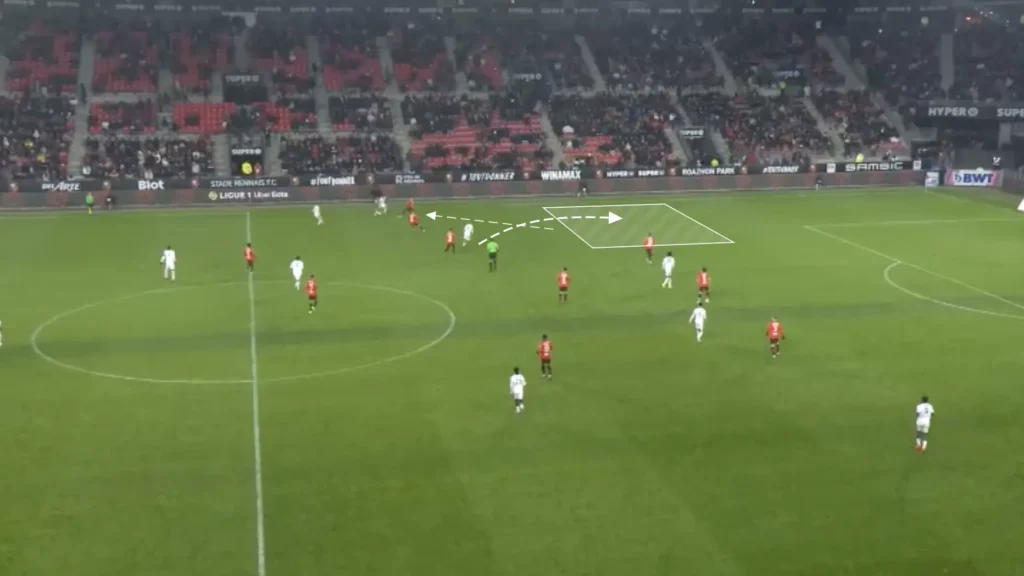
And from midfield runs and passes from the center:
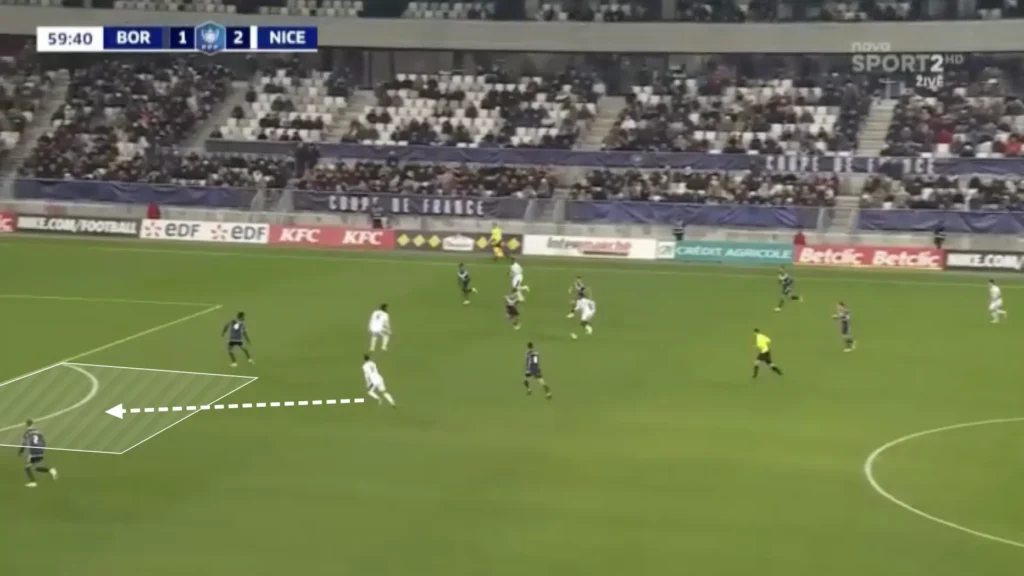
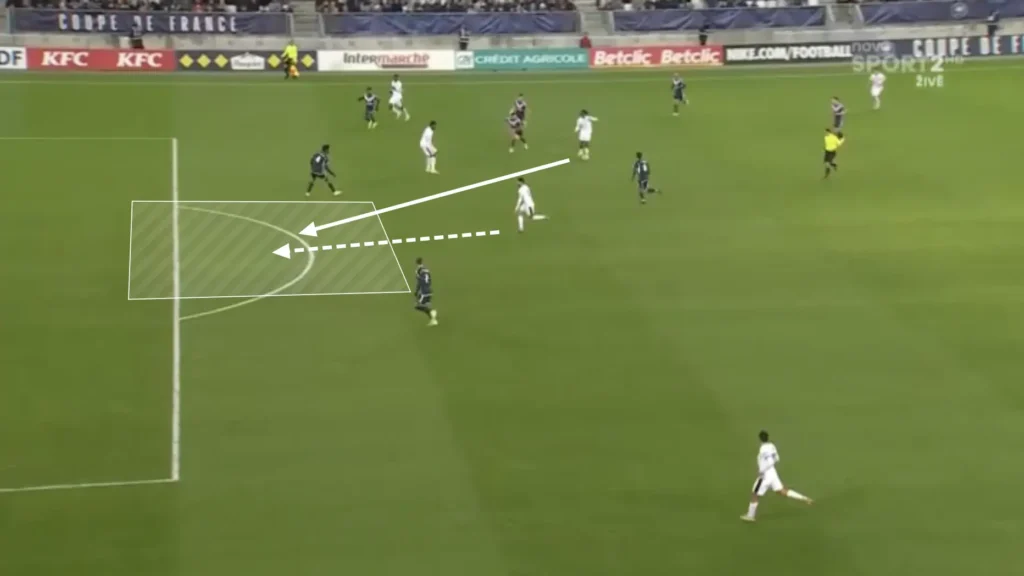
Many Players in the Box
The attacking midfielders also look to make runs into the box when the ball is in the final third, often getting four or five players into these areas to create overloads. The numerical advantages in the box force the defending team to make decisions and leave some players open. The open player can receive a cross or a pass and get a great goalscoring opportunity.
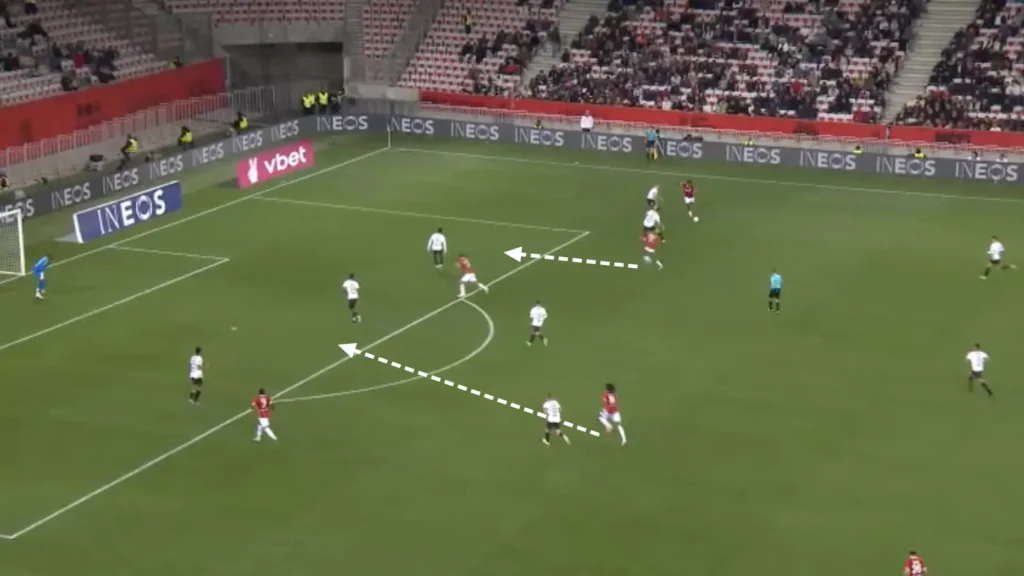
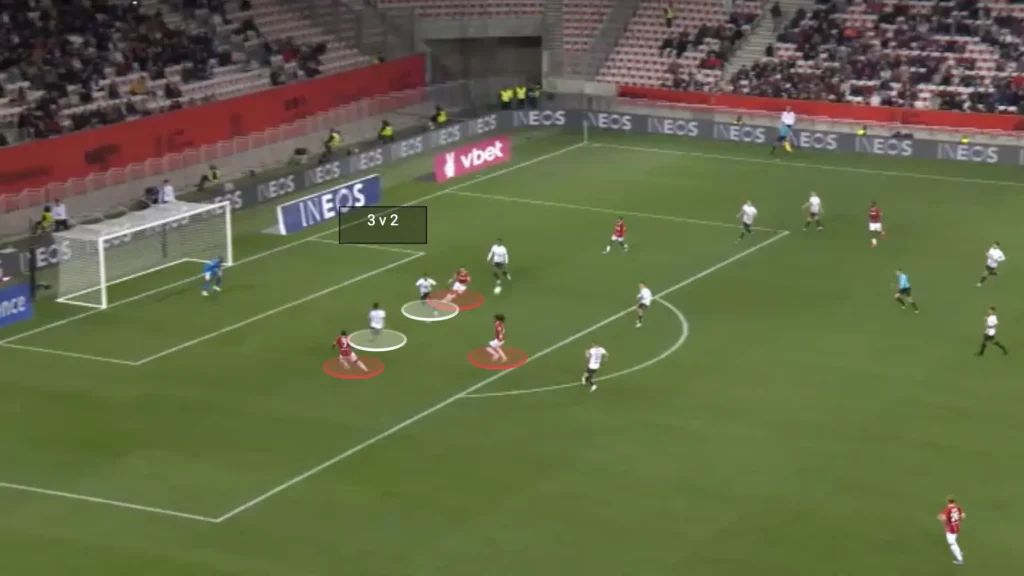
Principles and Tools
Rotations and Interchanges
Like his mentor, De Zerbi, Francesco Farioli always wants his team to play attacking and offensive football, regardless of the opposition. They like keeping possession and are often successful in doing so. One influential principle in doing this is to be fluid within the system and to find different interchanges and rotations. Here, the inverted fullback and the number eight interchange, creating space in the pocket for the fullback. This allows him to either receive the ball in the pocket or make the run down the channel to receive the ball in behind.
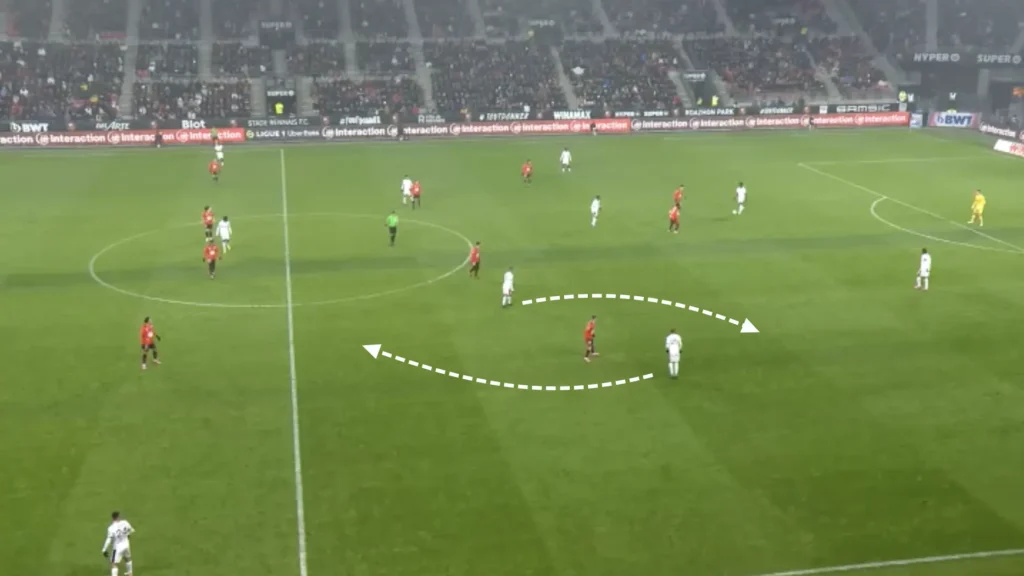
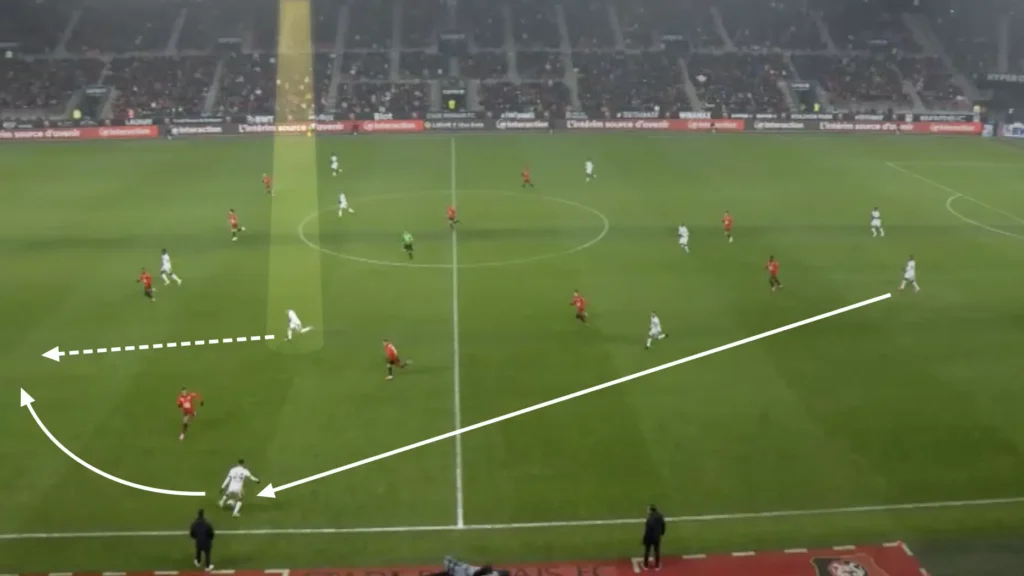
Playing Where the Space is
One of Farioli’s most important principles is to play where the space is. Against teams that do not press high, Nice will often slowly build up, trying to bait the pressure and play through the opposition. However, against high-pressing teams, they look to quickly play in behind, utilizing the space that the opponent leaves open.


Controlling the Game
Another important principle in Farioli’s game plan is to control the tempo of the game. Nice are masters at changing the tempo with a few quick passes to beat lines after having the ball for a long time.
One tool that helps control the game is for the center-backs to stand still with the ball:
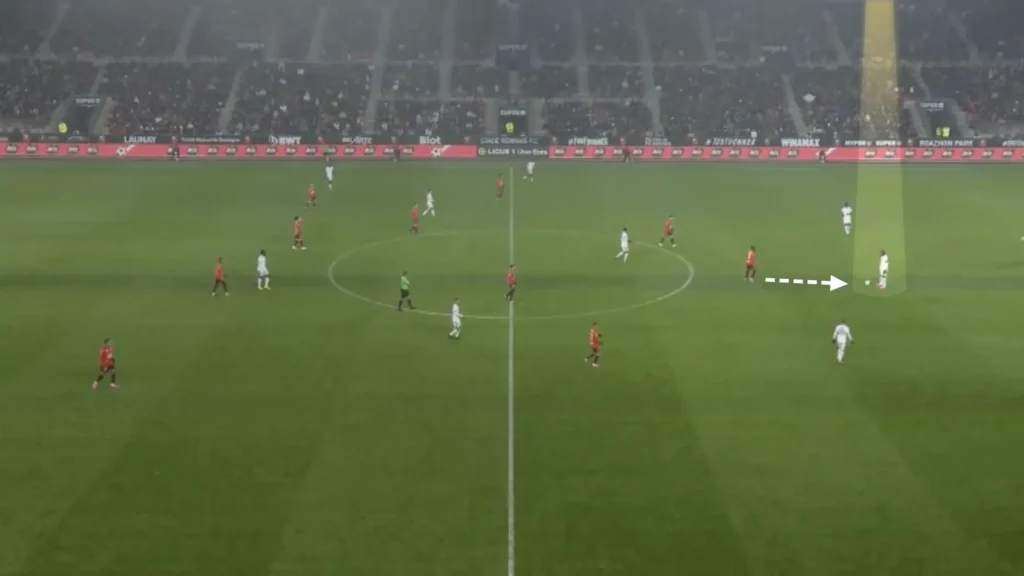
They do this for two reasons:
1.) It enables the center-back to play the ball to either side
2.) It lures the press while still having control of the ball
Follow Pressure
A tool for the Nice players in playing past the opposition in the build-up is to follow the pressure. This means running into the space that a pressing player is leaving behind. The space that opens is often the one behind the pressing winger, who pushes up on the fullback.
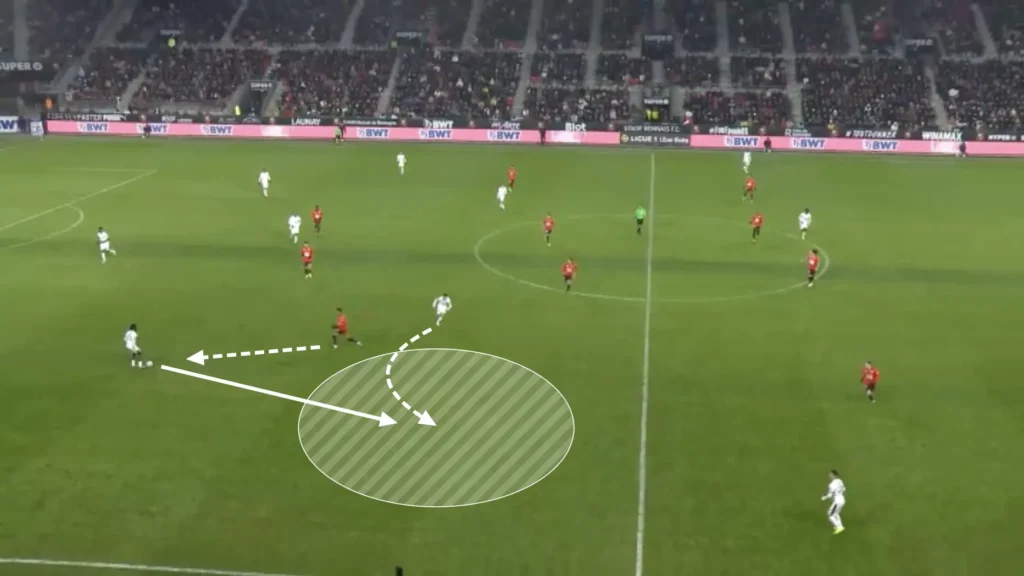
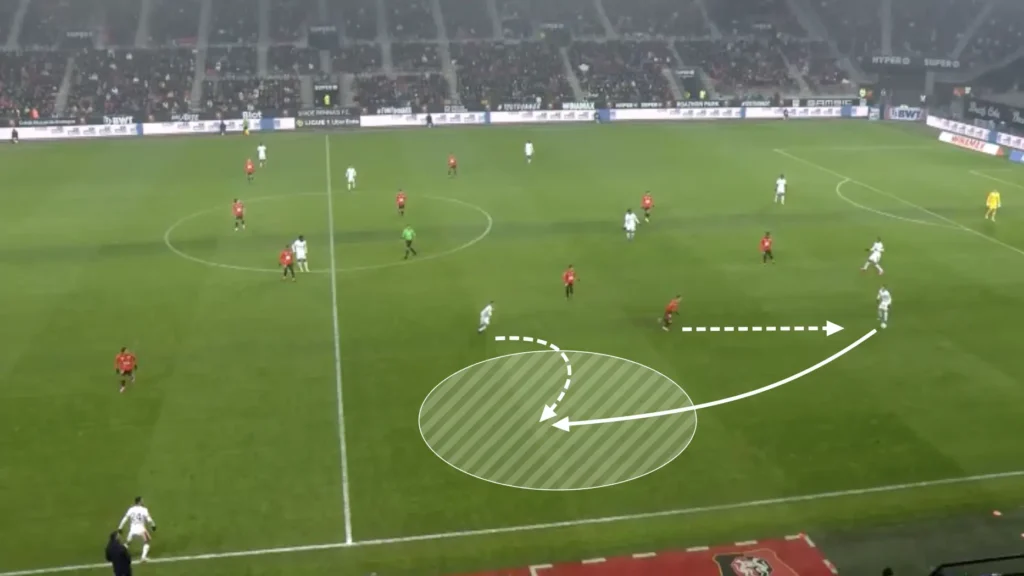
A recurring pattern of Farioli’s team is that the ball-side fullback drops when the center-back has the ball. This forces the defending winger to push up more, leaving the space behind him even bigger for the midfielder to drop into.
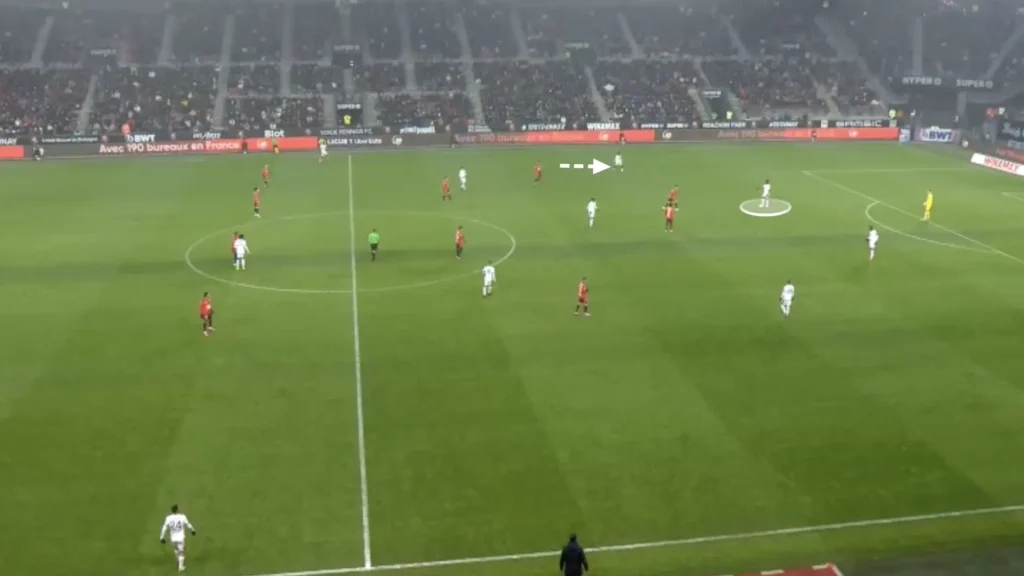
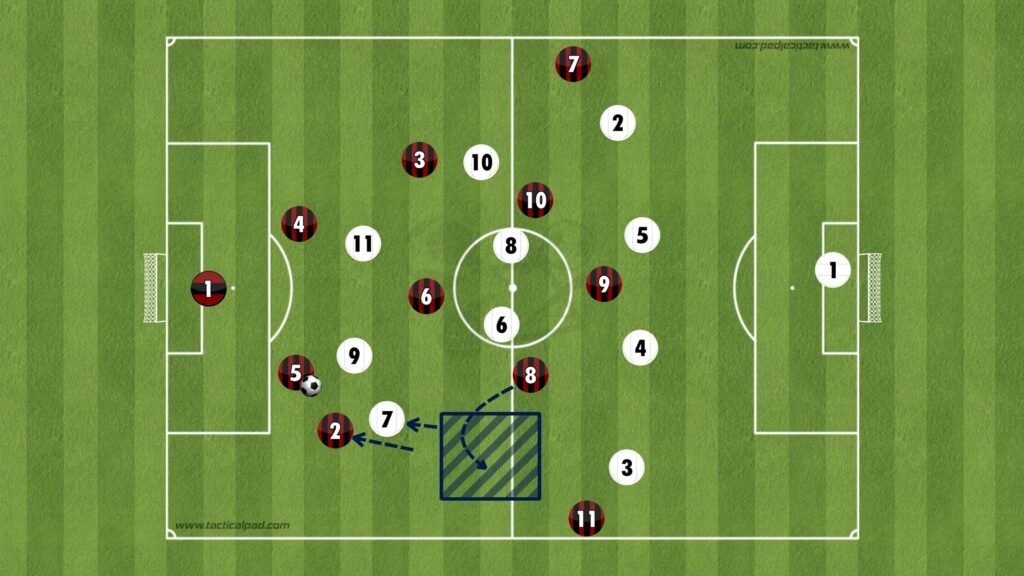
Numerical Advantages
Another essential principle of Farioli’s system is creating numerical advantages. Nice constantly look to find 3v2 and 2v1 situations, and it is through these that they create many of their goalscoring opportunities. Here, the ball carrier attacks the far shoulder of the defender while his teammate makes the run behind the defender to create a 2v1. This forces the defender to make a decision. He either has to push up to stop the attacker on the ball or drop to cover the run from the other attacker. If he pushes up, the attacker plays the ball to the running teammate, and if he drops, the attacker drives past the defender for a great shooting opportunity.
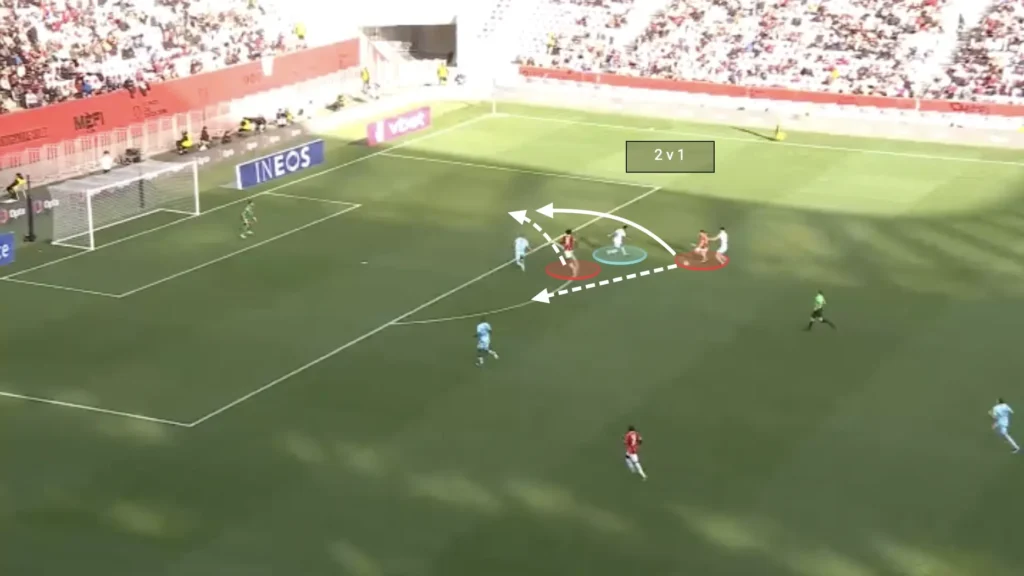
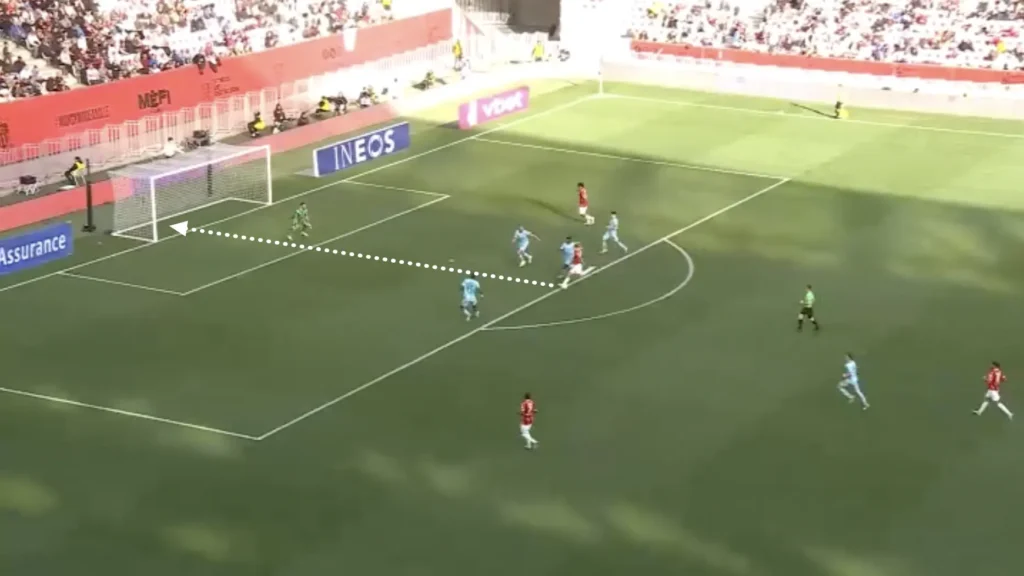
Farioli also likes to have many players in small spaces. This, as established, shortens the space between the players, making it difficult for the opposition to push up and press. It also creates numerical advantages, allowing Nice to play past the press.
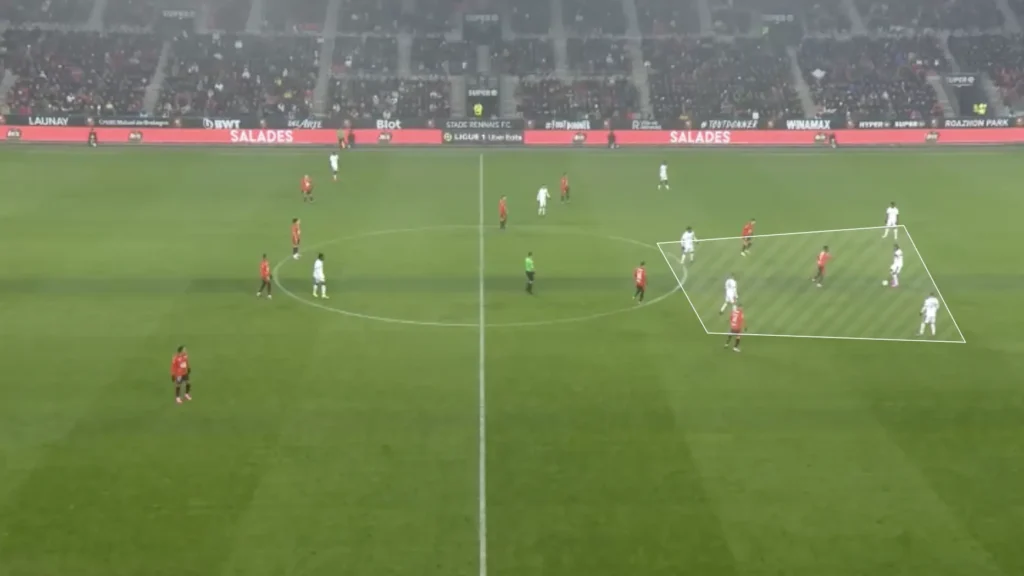
Defending
Low Press
In the low press, Nice use a 1-5-4-1 formation. They often set up in a low-block, always trying to stay compact while closing the center, forcing the opposition out wide.
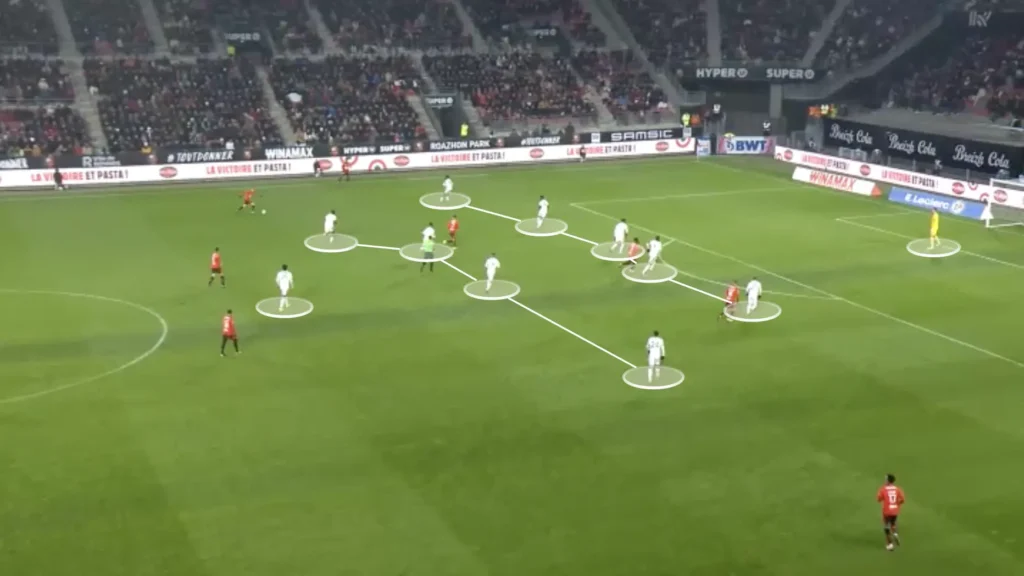
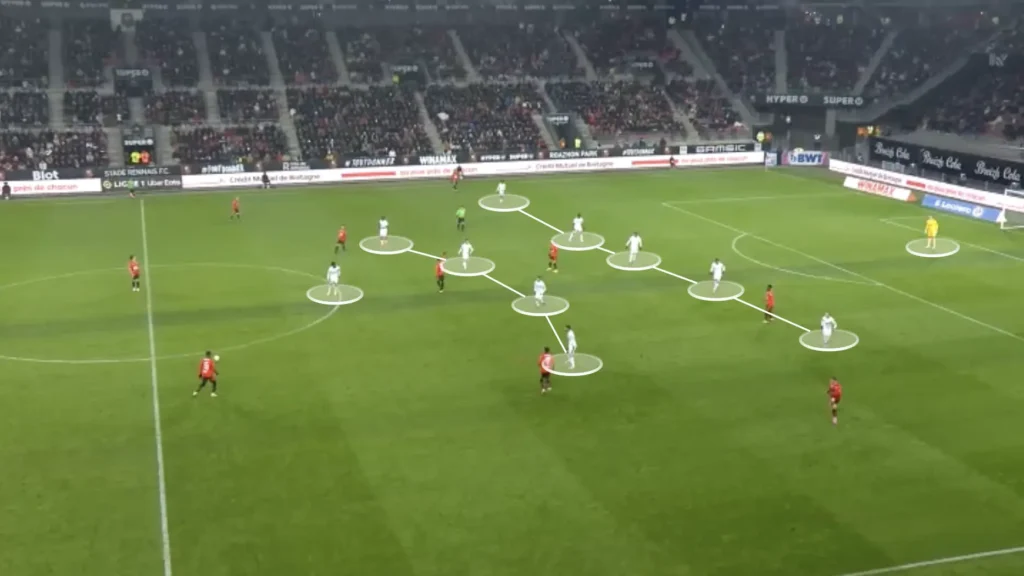
High Press
OGC Nice place much value in being aggressive without the ball. This shows in their high pressure. Farioli usually wants his team to go man-to-man and intensely press the opposition. They do this because of their principle of being the team controlling the tempo, therefore always looking to have possession.
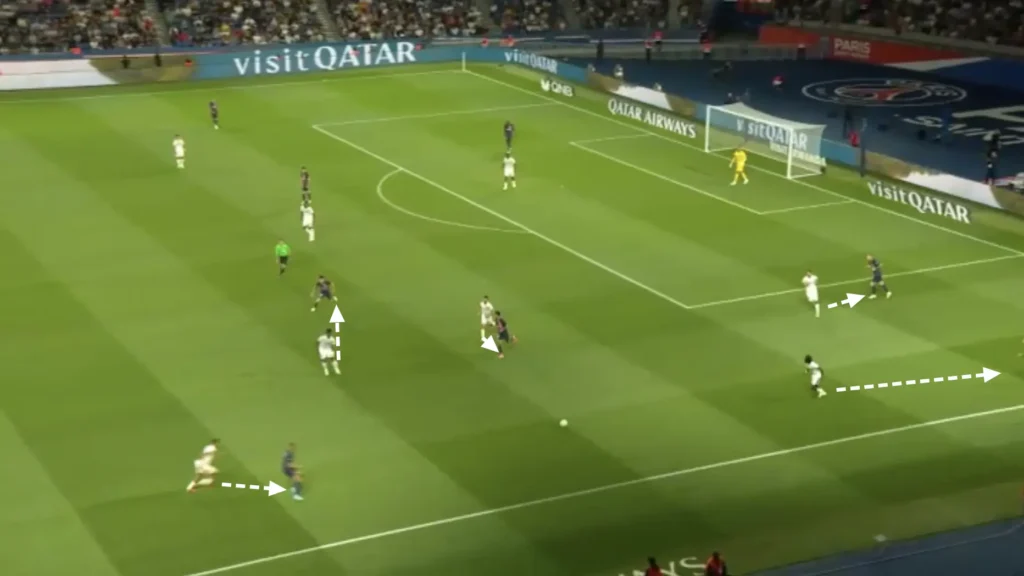
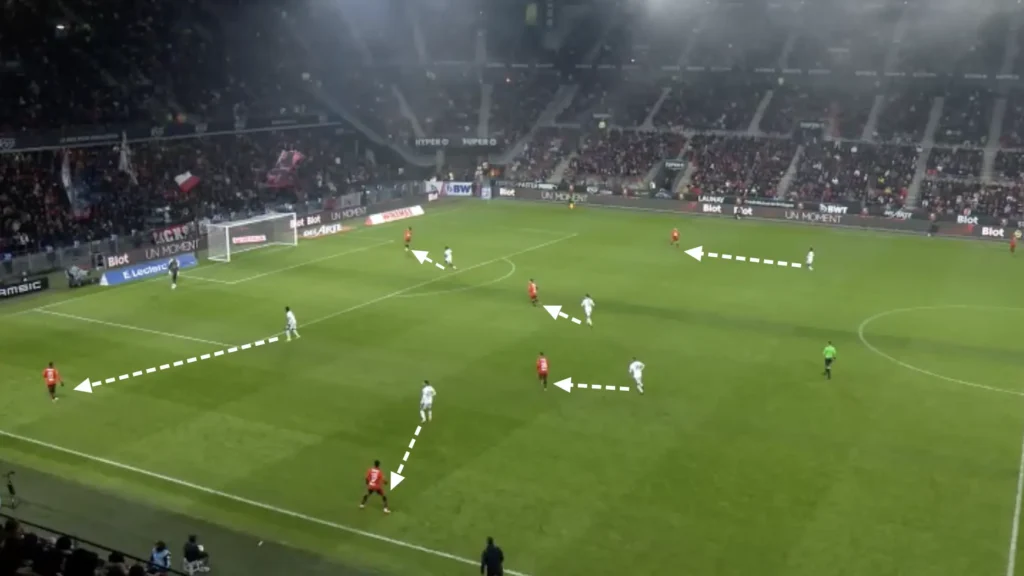
Final Thoughts
In conclusion, this tactical analysis sheds light on Francesco Farioli’s impactful strategies as the coach of OGC Nice. Through a detailed examination of their build-up, defensive organization, attacking patterns, and intricate principles, we gain insights into the intricacies of Farioli’s tactical philosophy. The deliberate use of a flexible formation, emphasis on positional play, and effective defensive structures contribute to OGC Nice’s prowess on the field. As Farioli continues to make his mark in the football coaching realm, this analysis provides a glimpse into the methods and approaches that define his coaching style, offering fans and enthusiasts a deeper understanding of the beautiful game as orchestrated by Francesco Farioli and OGC Nice.
